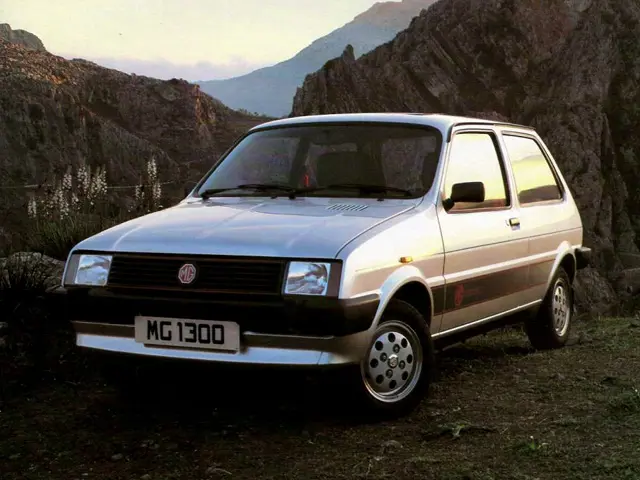THE MG METRO AT FORTY
28 April 2022
On 5th May 1982, British Leyland announced the latest version of the Metro – one bearing a name not seen on a new car since 1979. As the advertisements promised, it was time to “Fasten Your Seat Belts”.
To understand the impact of the MG Metro, we need to return to 1979, when the Abingdon factory looked increasingly under threat from British Leyland’s cost accountants. Then, MG supporters claimed the plant was more efficient than Longbridge, with two-thirds of the 30,000 annual B production run destined for the USA, where it remained so popular that it had a negative impact on the Triumph TR7. Meanwhile, grey-suited management types argued BL was now losing £900 on each B as US sales were severely affected by the currency crisis.

September 1979 saw elaborate celebrations of the factory’s 50th birthday. However, in that same month, and the timing of Little and Large, British Leyland’s Chairman Michael Edwardes announced the works’ imminent closure. BL assured motorists that the MG name would reappear “on a distinctive new model”, which would probably be a version of an “all-British model that was in an advanced stage of development for launch in about two years”. The former part of the statement was to quell rumours that the Octagon badge would adorn ‘Project Bounty’ – i.e., the future Triumph Acclaim. Meanwhile, production of the Midget ended in December 1979, and the last B left the plant on 23rd October 1980.
Enthusiasts of MG now believed the marque had gone the way of Riley, Wolseley and Austin-Healey – but that was not the case. The Austin Metro made its bow in October 1980, and by the end of the year, BL was planning a high-performance version. The MG made its bow in May 1982, to some complaints that it was not an open two-seater. Other motorists pointed out the marque’s long tradition of sporting saloons, which had ended in 1973 with the demise of the export-market (and Cowley-built) ADO16 1300, while dealers were delighted. Finally, they had a genuine ‘hot hatchback’ to offer their customers; the previous ‘sporting’ Metro was the S which was little more than the top-of-the-range HLS with less equipment and some over the top stripes.
By contrast, the MG boasted low-profile tyres, a rear spoiler, very tasteful red carpets, and alloy wheels. Under the bonnet, the 1,275cc ‘A-Plus’ engine featured a modified camshaft, a cylinder head with a ribbed alloy valve cover and a higher compression ratio, resulting in 12 bhp more power than the standard unit. The wonderfully over-the-top television commercial established the Metro as a member of the MG family:
At £4,799, it was also £95 cheaper than the Fiesta S and cost £351 less than the XR2 – facts that your friendly local Austin-Rover showroom would doubtless point out during a test drive.
BL was also keen to point out that a top speed of just over 100 mph made the Metro quicker than the Mini Cooper S, and it was also a favourite of the British motoring press. Autocar regarded it as a “cleverly assembled, good value package”. Car thought it outranked the Fiat 127GT S3 in terms of accommodation, comfort, economy, brakes, gear change and finish. They also preferred the Metro to the XR2 and stated it was “no poseur” but “a badge-engineered quickie as most MGs of the past were”.
Similarly, a running report in Motor Sport of October 1982 stated, “After now covering more than 1,000 miles in an MG Metro, I am captivated”. The Observer found it had “the coordinated feel of a car designed for, and love of, the MG name”, and The Daily Telegraph classed it alongside the Alfa Romeo Alfasud as a “practical fun car”. The report also evoked memories of the Riley Elf, Wolseley Hornet and Vanden Plas 1500 ‘Allegro; when it expressed relief that BL did not attempt “to impose a “traditional chrome-plated MG grille on the front of the Metro”
In October 1982, Austin-Rover unveiled the Metro Turbo, but the impact of the original 1300 version should not be overlooked. 1982 was arguably the year when the Metro consolidated its appeal, a time just before the arrival of the Fiat Uno and the Peugeot 205 – and the MG was a crucial element in its success. Plus, who could resist the appeal of a car with red seat belts as standard.
